1.2: The Process of Science
- Page ID
- 117283
Like geology, physics, and chemistry, biology is a science that gathers knowledge about the natural world. Specifically, biology is the study of life. The discoveries of biology are made by a community of researchers who work individually and together using agreed-on methods. In this sense, biology, like all sciences is a social enterprise like politics or the arts.
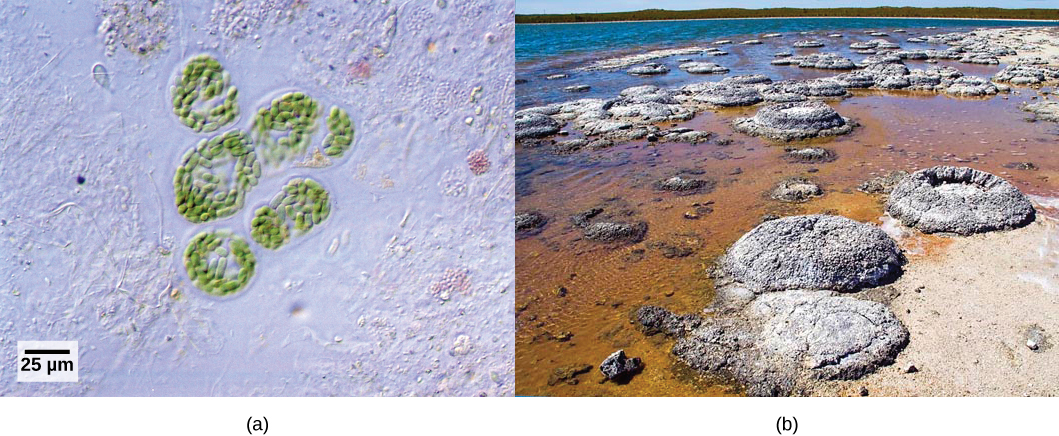
The methods of science include careful observation, record keeping, logical and mathematical reasoning, experimentation, and submitting conclusions to the scrutiny of others. Science also requires considerable imagination and creativity; a well-designed experiment is commonly described as elegant, or beautiful. Like politics, science has considerable practical implications and some science is dedicated to practical applications, such as the prevention of disease (Figure \(\PageIndex{2}\)). Other science proceeds largely motivated by curiosity. Whatever its goal, there is no doubt that science, including biology, has transformed human existence and will continue to do so.

The Process of Science
Biology is a science, but what exactly is science? What does the study of biology share with other scientific disciplines? Science (from the Latin scientia, meaning "knowledge") can be defined as knowledge about the natural world.
Science is a very specific way of learning, or knowing, about the world. The history of the past 500 years demonstrates that science is a very powerful way of knowing about the world; it is largely responsible for the technological revolutions that have taken place during this time. There are however, areas of knowledge and human experience that the methods of science cannot be applied to. These include such things as answering purely moral questions, aesthetic questions, or what can be generally categorized as spiritual questions. Science has cannot investigate these areas because they are outside the realm of material phenomena, the phenomena of matter and energy, and cannot be observed and measured.
The scientific method is a method of research with defined steps that include experiments and careful observation. The steps of the scientific method will be examined in detail later, but one of the most important aspects of this method is the testing of hypotheses. A hypothesis is a suggested explanation for an event, which can be tested. Hypotheses, or tentative explanations, are generally produced within the context of a scientific theory. A scientific theory is a generally accepted, thoroughly tested and confirmed explanation for a set of observations or phenomena. Scientific theory is the foundation of scientific knowledge. In addition, in many scientific disciplines (less so in biology) there are scientific laws, often expressed in mathematical formulas, which describe how elements of nature will behave under certain specific conditions. There is not an evolution of hypotheses through theories to laws as if they represented some increase in certainty about the world. Hypotheses are the day-to-day material that scientists work with and they are developed within the context of theories. Laws are concise descriptions of parts of the world that are amenable to formulaic or mathematical description.
Natural Sciences
What would you expect to see in a museum of natural sciences? Frogs? Plants? Dinosaur skeletons? Exhibits about how the brain functions? A planetarium? Gems and minerals? Or maybe all of the above? Science includes such diverse fields as astronomy, biology, computer sciences, geology, logic, physics, chemistry, and mathematics (Figure \(\PageIndex{3}\)). However, those fields of science related to the physical world and its phenomena and processes are considered natural sciences. Thus, a museum of natural sciences might contain any of the items listed above.
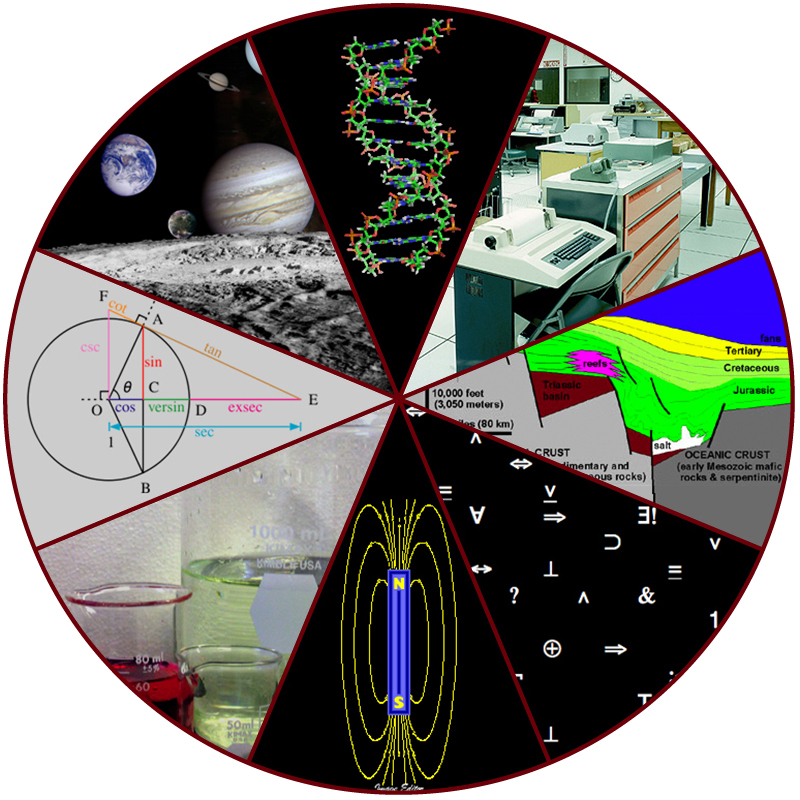
There is no complete agreement when it comes to defining what the natural sciences include. For some experts, the natural sciences are astronomy, biology, chemistry, earth science, and physics. Other scholars choose to divide natural sciences into life sciences, which study living things and include biology, and physical sciences, which study nonliving matter and include astronomy, physics, and chemistry. Some disciplines such as biophysics and biochemistry build on two sciences and are interdisciplinary.
Scientific Inquiry
One thing is common to all forms of science: an ultimate goal “to know.” Curiosity and inquiry are the driving forces for the development of science. Scientists seek to understand the world and the way it operates. Two methods of logical thinking are used: inductive reasoning and deductive reasoning.
Inductive reasoning is a form of logical thinking that uses related observations to arrive at a general conclusion. This type of reasoning is common in descriptive science. A life scientist such as a biologist makes observations and records them. These data can be qualitative (descriptive) or quantitative (consisting of numbers), and the raw data can be supplemented with drawings, pictures, photos, or videos. From many observations, the scientist can infer conclusions (inductions) based on evidence. Inductive reasoning involves formulating generalizations inferred from careful observation and the analysis of a large amount of data. Brain studies often work this way. Many brains are observed while people are doing a task. The part of the brain that lights up, indicating activity, is then demonstrated to be the part controlling the response to that task.
Deductive reasoning or deduction is the type of logic used in hypothesis-based science. In deductive reasoning, the pattern of thinking moves in the opposite direction as compared to inductive reasoning. Deductive reasoning is a form of logical thinking that uses a general principle or law to forecast specific results. From those general principles, a scientist can extrapolate and predict the specific results that would be valid as long as the general principles are valid. For example, a prediction would be that if the climate is becoming warmer in a region, the distribution of plants and animals should change. Comparisons have been made between distributions in the past and the present, and the many changes that have been found are consistent with a warming climate. Finding the change in distribution is evidence that the climate change conclusion is a valid one.
Both types of logical thinking are related to the two main pathways of scientific study: descriptive science and hypothesis-based science. Descriptive (or discovery) science aims to observe, explore, and discover, while hypothesis-based science begins with a specific question or problem and a potential answer or solution that can be tested. The boundary between these two forms of study is often blurred, because most scientific endeavors combine both approaches. Observations lead to questions, questions lead to forming a hypothesis as a possible answer to those questions, and then the hypothesis is tested. Thus, descriptive science and hypothesis-based science are in continuous dialogue.
The Scientific Process and Hypothesis Testing
Biologists study the living world by posing questions about it and seeking science-based responses. This approach is common to other sciences as well and is often referred to as the scientific method. The scientific method was used even in ancient times, but it was first documented by England’s Sir Francis Bacon (1561–1626) (Figure \(\PageIndex{4}\)), who set up inductive methods for scientific inquiry. The scientific method is not exclusively used by biologists but can be applied to almost anything as a logical problem-solving method.

Observations lead to a Question
The scientific process typically starts with an observation (often a problem to be solved) that leads to a question. Remember that science is very good at answering questions having to do with observations about the natural world, but is very bad at answering questions having to do with morals, ethics, or personal opinions.
| Questions that can be answered using science | Questions that cannot be answered using science |
|---|---|
| • What is the optimum temperature for the growth of E. coli bacteria? | • How tall is Santa Claus? |
| • Do birds prefer bird feeders of a specific color? | • Do angels exist? |
| • What is the cause of this disease? | • Which is better: classical music or rock and roll? |
| • How effective is this drug in treating this disease? | • What are the ethical implications of human cloning? |
Let’s think about a simple problem that starts with an observation and apply the scientific method to solve the problem. Imagine that one morning when you wake up and flip the switch to turn on your bedside lamp, the light won’t turn on. That is an observation that also describes a problem: the lights won’t turn on. Of course, you would next ask the question: “Why won’t the light turn on?”
Hypothesis
Recall that a hypothesis is a suggested explanation that can be tested. A hypothesis is NOT the question you are trying to answer – it is what you think the answer to the question will be and why. To solve a problem, several hypotheses may be proposed. For example, one hypothesis might be, “The light won’t turn on because the bulb is burned out.” But there could be other answers to the question, and therefore other hypotheses may be proposed. A second hypothesis might be, “The light won’t turn on because the lamp is unplugged” or “The light won’t turn on because the power is out.” A hypothesis should be based on credible background information. A hypothesis is NOT just a guess (not even an educated one), although it can be based on your prior experience (such as in the example where the light won’t turn on). In general, hypotheses in biology should be based on a credible, referenced source of information.
Once a hypothesis has been selected, a prediction may be made. A prediction is similar to a hypothesis but it typically has the format “If . . . then . . . .” For example, the prediction for the first hypothesis might be, “If change the light bulb, then the light will go on.”
A hypothesis must be testable to ensure that it is valid. For example, a hypothesis that depends on what a dog thinks is not testable, because we can’t tell what a dog thinks. It should also be falsifiable, meaning that it can be disproven by experimental results. An example of an unfalsifiable hypothesis is “Red is a better color than blue.” There is no experiment that might show this statement to be false. To test a hypothesis, a researcher will conduct one or more experiments designed to eliminate one or more of the hypotheses. This is important: a hypothesis can be disproven, or eliminated, but it can never be proven. Science does not deal in proofs like mathematics. If an experiment fails to disprove a hypothesis, then that explanation (the hypothesis) is supported as the answer to the question. However, that doesn’t mean that later on, we won’t find a better explanation or design a better experiment that will be found to falsify the first hypothesis and lead to a better one.
Variables
A variable is any part of the experiment that can vary or change during the experiment. Each experiment will have one or more variables and one or more controls. A variable is any part of the experiment that can vary or change during the experiment. A control is a part of the experiment that does not change (it is held constant). A simple experiment only tests one variable and all the other conditions in the experiment are held constant.
- The variable that is tested is known as the independent variable.
- The dependent variable is the thing (or things) that you are measuring as the outcome of your experiment.
- A controlled variable (a constant) is a condition that is the same between all of the tested groups.
- A confounding variable is a condition that is not held constant that could affect the experimental results.
A hypothesis often has the format of a prediction: “If [I change the independent variable in this way] then [I will observe that the dependent variable does this] because [of some reason].” For example, the first hypothesis might be, “If you change the light bulb, then the light will turn on because the bulb is burned out.” In this experiment, the independent variable (the thing that you are testing) would be changing the light bulb and the dependent variable is whether or not the light turns on. It would be important to hold all the other aspects of the environment constant (as controlled variables), for example not messing with the lamp cord or trying to turn the lamp on using a different light switch. If the entire house had lost power during the experiment because a car hit the power pole, that would be a confounding variable.
You may have learned that a hypothesis prediction can be phrased as an “If..then…” statement. Simple hypotheses can be phrased that way (but they must also include a “because”), but more complicated hypotheses may require several sentences. It is also very easy to get confused by trying to put your hypothesis into this format. Hypotheses do not have to be phrased as “if..then..” statements, it is just sometimes a useful format.
As a simple biological example, an experiment might be conducted to test the hypothesis that phosphate increases the growth of algae in freshwater ponds. The prediction is that “If you add phosphate, then the algae growth will increase.” A series of artificial ponds are filled with water and half of them are treated by adding phosphate each week, while the other half are treated by adding an inert salt that is known not to be used by algae and not to harm algae. The independent variable here is the phosphate (or lack of phosphate) added, the experimental or treatment cases are the ponds with added phosphate and the control ponds are those with something inert added, such as the salt. Just adding something is also a control against the possibility that adding extra matter to the pond has an effect. If the treated ponds show more growth of algae, then we have found support for our hypothesis. If they do not, then we reject our hypothesis. Be aware that rejecting one hypothesis does not determine whether or not the other hypotheses can be accepted; it simply eliminates one hypothesis that is not valid (Figure \(\PageIndex{5}\)). Using the scientific method, the hypotheses that are inconsistent with experimental data are rejected.
\(\PageIndex{1}\)
\(\PageIndex{2}\)
\(\PageIndex{3}\)
Results
The results of your experiment are the data that you collect as the outcome. In the light experiment, your results are either that the light turns on or the light doesn’t turn on. Based on your results, you can make a conclusion. Your conclusion uses the results to answer your original question.

We can put the experiment with the light that won’t go in into the figure above:
- Observation: the light won’t turn on.
- Question: why won’t the light turn on?
- Hypothesis: the lightbulb is burned out.
- Prediction: if I change the lightbulb (independent variable), then the light will turn on (dependent variable).
- Experiment: change the lightbulb while leaving all other variables the same.
- Analyze the results: the light didn’t turn on.
- Conclusion: The lightbulb isn’t burned out. The results do not support the hypothesis, time to develop a new one!
- Hypothesis 2: the lamp is unplugged.
- Prediction 2: if I plug in the lamp, then the light will turn on.
- Experiment: plug in the lamp
- Analyze the results: the light turned on!
- Conclusion: The light wouldn’t turn on because the lamp was unplugged. The results support the hypothesis, it’s time to move on to the next experiment!
In practice, the scientific method is not as rigid and structured as it might at first appear. Sometimes an experiment leads to conclusions that favor a change in approach; often, an experiment brings entirely new scientific questions to the puzzle. Many times, science does not operate in a linear fashion; instead, scientists continually draw inferences and make generalizations, finding patterns as their research proceeds. Scientific reasoning is more complex than the scientific method alone suggests.
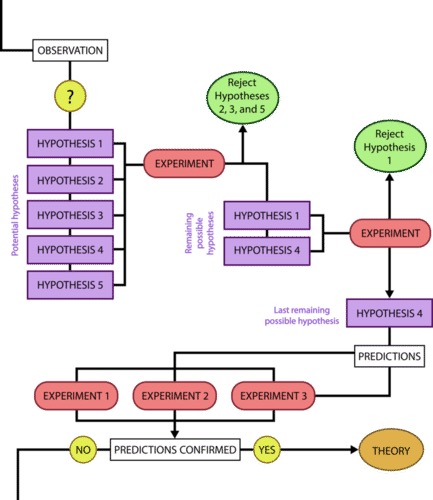
Figure \(\PageIndex{6}\): The actual process of using the scientific method. “The general process of scientific investigations” by Laura Guerin, CK-12 Foundation is licensed under CC BY-NC 3.0
In this example, the scientific method is used to solve an everyday problem. Which part listed below is the hypothesis? Which is the prediction? Based on the results of the experiment, is the hypothesis supported? If it is not supported, propose some alternative hypotheses.
- My toaster doesn’t toast my bread.
- Why doesn’t my toaster work?
- There is something wrong with the electrical outlet.
- If something is wrong with the outlet, my coffeemaker also won’t work when plugged into it.
- I plug my coffeemaker into the outlet.
- My coffeemaker works.
Solution
The hypothesis is #3 (there is something wrong with the electrical outlet), and the prediction is #4 (if something is wrong with the outlet, then the coffeemaker also won’t work when plugged into the outlet). The original hypothesis is not supported, as the coffee maker works when plugged into the outlet. Alternative hypotheses may include (1) the toaster might be broken or (2) the toaster wasn’t turned on.
Control Groups
Another important aspect of designing an experiment is the presence of one or more control groups. A control group allows you to make a comparison that is important for interpreting your results. Control groups are samples that help you to determine that differences between your experimental groups are due to your treatment rather than a different variable – they eliminate alternate explanations for your results (including experimental error and experimenter bias). They increase reliability, often through the comparison of control measurements and measurements of the experimental groups. Often, the control group is a sample that is not treated with the independent variable, but is otherwise treated the same way as your experimental sample. This type of control group contains every feature of the experimental group except it is not given the manipulation that is hypothesized about (it does not get treated with the independent variable). Therefore, if the results of the experimental group differ from the control group, the difference must be due to the hypothesized manipulation, rather than some outside factor. It is common in complex experiments (such as those published in scientific journals) to have more control groups than experimental groups.
Question: Which fertilizer will produce the greatest number of tomatoes when applied to the plants?
Prediction and Hypothesis: If I apply different brands of fertilizer to tomato plants, the most tomatoes will be produced from plants watered with Brand A because Brand A advertises that it produces twice as many tomatoes as other leading brands.
Experiment: Purchase 10 tomato plants of the same type from the same nursery. Pick plants that are similar in size and age. Divide the plants into two groups of 5. Apply Brand A to the first group and Brand B to the second group according to the instructions on the packages. After 10 weeks, count the number of tomatoes on each plant.
Independent Variable: Brand of fertilizer.
Dependent Variable: Number of tomatoes.
The number of tomatoes produced depends on the brand of fertilizer applied to the plants.
Constants: amount of water, type of soil, size of pot, amount of light, type of tomato plant, length of time plants were grown.
Confounding variables: any of the above that are not held constant, plant health, diseases present in the soil or plant before it was purchased.
Results: Tomatoes fertilized with Brand A produced an average of 20 tomatoes per plant, while tomatoes fertilized with Brand B produced an average of 10 tomatoes per plant.
You’d want to use Brand A next time you grow tomatoes, right? But what if I told you that plants grown without fertilizer produced an average of 30 tomatoes per plant! Now what will you use on your tomatoes?
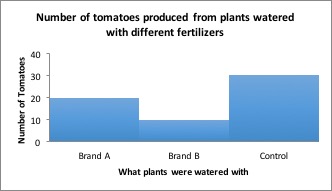
Results including control group: Tomatoes which received no fertilizer produced more tomatoes than either brand of fertilizer.
Conclusion: Although Brand A fertilizer produced more tomatoes than Brand B, neither fertilizer should be used because plants grown without fertilizer produced the most tomatoes!
What Is a Scientific Theory?
Germ theory, which is described in detail below, is one of several scientific theories you will read about in biology. A scientific theory is a broad explanation of events that is widely accepted by the scientific community. To become a theory, an explanation must be strongly supported by a great deal of evidence.
People commonly use the word theory to describe a guess or hunch about how or why something happens. For example, you might say, "I think a woodchuck dug this hole in the ground, but it's just a theory." Using the word theory in this way is different from the way it is used in science. A scientific theory is not just a guess or hunch that may or may not be true. In science, a theory is an explanation that has a high likelihood of being correct because it is so well supported by evidence.
Germ Theory: A Human Biology Example
The germ theory of disease states that contagious diseases are caused by "germs," or microorganisms, which are organisms that are too small to be seen without magnification. Microorganisms that cause disease are called pathogens. Human pathogens include bacteria and viruses, among other microscopic entities. When pathogens invade humans or other living hosts, they grow, reproduce, and make their hosts sick. Diseases caused by germs are contagious because the microorganisms that cause them can spread from person to person.
Germ theory was first clearly stated by an Italian physician named Girolamo Fracastoro in the mid-1500s. Fracastoro proposed that contagious diseases are caused by transferable "seed-like entities," which we now call germs. According to Fracastoro, germs spread through populations, making many people sick, through direct or indirect contact between individuals.
Fracastoro's idea, though essentially correct, was disregarded by other physicians. Instead, ancient idea of miasma (bad smells) causing disease (Figure \(\PageIndex{7}\)) remained the accepted explanation for the spread of disease for another 300 years. However, evidence for Fracastoro's idea accumulated during that time. Some of the earliest evidence was provided by the Dutch lens and microscope maker Anton van Leeuwenhoek, who discovered microorganisms. By the 1670s, van Leeuwenhoek had directly observed many different types of microorganisms, including bacteria.
An individual in this sketch is holding his nose to avoid breathing in the miasma. Miasma refers to a toxic vapor that people believed for centuries was a cause of many diseases, including cholera and plague. The idea that miasma causes diseases was first proposed in the second century B.C.E. by a prominent Greek physician named Galen. They believed that miasma, which is identifiable by its foul smell, emanates from rotting organic matter and sickens people who live close enough to inhale it. Miasma was the predominant explanation for disease transmission from the time of Galen until the germ theory of disease became widely accepted in the late 1800s.
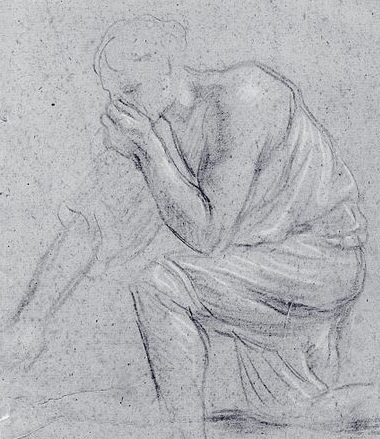
Evidence from Puerperal (Childbed) Fever
One of the first physicians to demonstrate that a microorganism is the cause of a specific human disease was the Hungarian obstetrician Ignaz Semmelweis in the 1840s. The disease was puerperal fever, an often-fatal infection of the female reproductive organs. Puerperal fever is also called childbed fever because it usually affects women who have just given birth.
Semmelweis observed that deaths from puerperal fever occurred much more often when women had been attended by doctors at his hospital than by midwives at home. Semmelweis also noticed that doctors often came directly from autopsies to the beds of women about to give birth. From his observations, Semmelweis inferred that puerperal fever was a contagious disease caused by some type of matter carried to pregnant patients on the hands of doctors from autopsied bodies. As a consequence, Semmelweis urged doctors and medical students at his hospital to wash their hands with chlorinated lime water before examining pregnant women. After this change, the hospital's death rate for women who had just given birth fell from 18 to 2 percent, which was a 90 percent reduction. Some of Semmelweis' findings are presented in Figure \(\PageIndex{8}\).

Semmelweis published his results, but they were derided by the medical profession. The idea that doctors themselves were the carriers of a fatal disease was taken as a personal affront by his fellow physicians. One of Semmelweis' peers protested indignantly that doctors are gentlemen and that gentlemen's hands are always clean. As a result of attitudes such as this, Semmelweis became the target of a vicious smear campaign. Eventually, Semmelweis had a mental breakdown and was committed to a mental hospital, where he died.
Discovering Microbes
Throughout the later 1800s, more formal investigations were conducted on the relationship between germs and disease. Some of the most important was undertaken by Louis Pasteur (pictured in his lab in Figure \(\PageIndex{9}\)). Pasteur was a French chemist who did careful experiments to show that fermentation, food spoilage, and certain diseases are caused by microorganisms.
He discovered the cause of puerperal fever in 1879 and determined it was an infection caused by the bacterium Streptococcus pyogenes (Figure \(\PageIndex{9}\)). Although Pasteur was not the first person to propose germ theory, his investigations clearly supported it. He also became a strong proponent of the theory and managed to convince most of the scientific community of its validity.

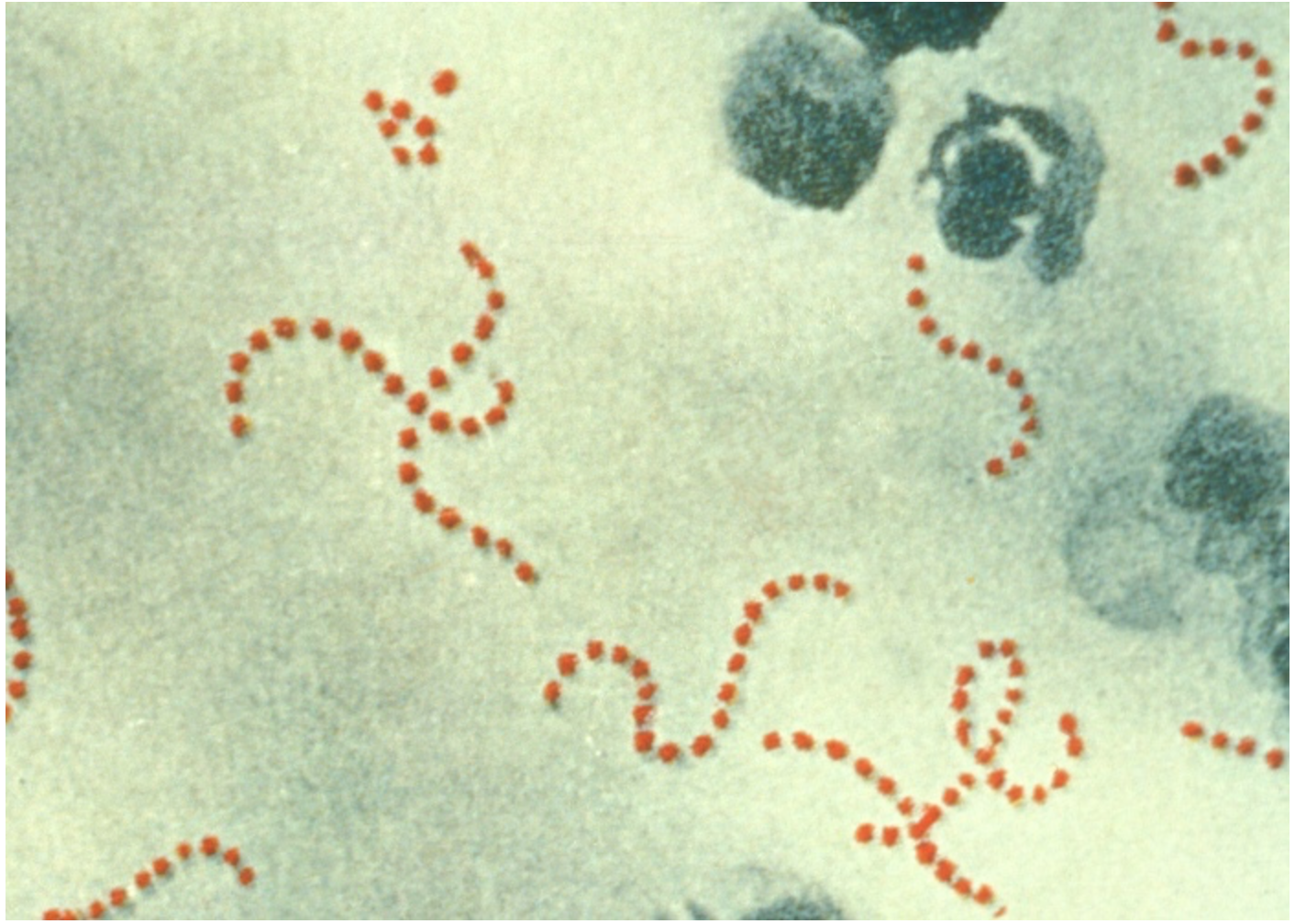
Emerging Diseases
Scientific theories are not static and neither is the world around us. While we have been studying disease for hundreds of years, there is always more to learn. One reason for this is that organisms (such as those that cause disease) are always changing. This evolution of organisms leads to new diseases such as the COVID-19 pandemic. This resulted from a novel coronavirus (SARS-CoV-2) which is a descendent of coronaviruses that did not infect humans. Scientists are continually developing new strategies for learning about and curing emerging diseases.

Basic and Applied Science
The scientific community has been debating for the last few decades about the value of different types of science. Is it valuable to pursue science for the sake of simply gaining knowledge, or does scientific knowledge only have worth if we can apply it to solving a specific problem or bettering our lives? This question focuses on the differences between two types of science: basic science and applied science.
Basic science or “pure” science seeks to expand knowledge regardless of the short-term application of that knowledge. It is not focused on developing a product or a service of immediate public or commercial value. The immediate goal of basic science is knowledge for knowledge’s sake, though this does not mean that in the end it may not result in an application.
In contrast, applied science or “technology,” aims to use science to solve real-world problems, making it possible, for example, to improve a crop yield, find a cure for a particular disease, or save animals threatened by a natural disaster. In applied science, the problem is usually defined for the researcher.
Some individuals may perceive applied science as “useful” and basic science as “useless.” A question these people might pose to a scientist advocating knowledge acquisition would be, “What for?” A careful look at the history of science, however, reveals that basic knowledge has resulted in many remarkable applications of great value. Many scientists think that a basic understanding of science is necessary before an application is developed; therefore, applied science relies on the results generated through basic science. Other scientists think that it is time to move on from basic science and instead to find solutions to actual problems. Both approaches are valid. It is true that there are problems that demand immediate attention; however, few solutions would be found without the help of the knowledge generated through basic science.
One example of how basic and applied science can work together to solve practical problems occurred after the discovery of DNA structure led to an understanding of the molecular mechanisms governing DNA replication. Strands of DNA, unique in every human, are found in our cells, where they provide the instructions necessary for life. During DNA replication, new copies of DNA are made, shortly before a cell divides to form new cells. Understanding the mechanisms of DNA replication enabled scientists to develop laboratory techniques that are now used to identify genetic diseases, pinpoint individuals who were at a crime scene, and determine paternity. Without basic science, it is unlikely that applied science would exist.
Another example of the link between basic and applied research is the Human Genome Project, a study in which each human chromosome was analyzed and mapped to determine the precise sequence of DNA subunits and the exact location of each gene. (The gene is the basic unit of heredity; an individual’s complete collection of genes is his or her genome.) Other organisms have also been studied as part of this project to gain a better understanding of human chromosomes. The Human Genome Project (Figure \(\PageIndex{11}\)) relied on basic research carried out with non-human organisms and, later, with the human genome. An important end goal eventually became using the data for applied research seeking cures for genetically related diseases.
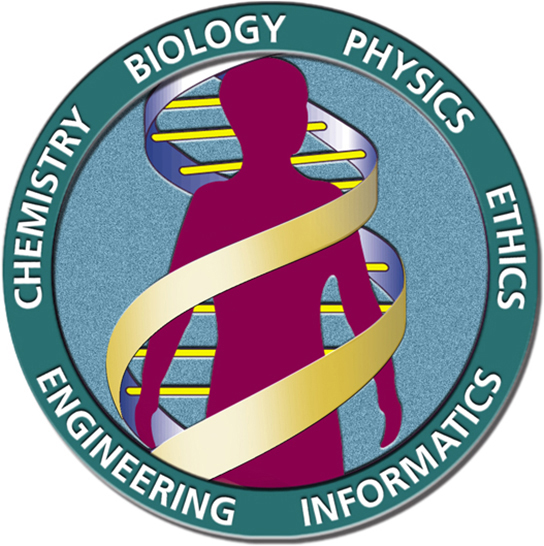
While research efforts in both basic science and applied science are usually carefully planned, it is important to note that some discoveries are made by serendipity, that is, by means of a fortunate accident or a lucky surprise. Penicillin was discovered when biologist Alexander Fleming accidentally left a petri dish of Staphylococcus bacteria open. An unwanted mold grew, killing the bacteria. The mold turned out to be Penicillium, and a new antibiotic was discovered. Even in the highly organized world of science, luck—when combined with an observant, curious mind—can lead to unexpected breakthroughs.
Reporting Scientific Work
Whether scientific research is basic science or applied science, scientists must share their findings for other researchers to expand and build upon their discoveries. Communication and collaboration within and between sub disciplines of science are key to the advancement of knowledge in science. For this reason, an important aspect of a scientist’s work is disseminating results and communicating with peers. Scientists can share results by presenting them at a scientific meeting or conference, but this approach can reach only the limited few who are present. Instead, most scientists present their results in peer-reviewed articles that are published in scientific journals. Peer-reviewed articles are scientific papers that are reviewed, usually anonymously by a scientist’s colleagues, or peers. These colleagues are qualified individuals, often experts in the same research area, who judge whether or not the scientist’s work is suitable for publication. The process of peer review helps to ensure that the research described in a scientific paper or grant proposal is original, significant, logical, and thorough. Grant proposals, which are requests for research funding, are also subject to peer review. Scientists publish their work so other scientists can reproduce their experiments under similar or different conditions to expand on the findings. The experimental results must be consistent with the findings of other scientists.
There are many journals and the popular press that do not use a peer-review system. A large number of online open-access journals, journals with articles available without cost, are now available many of which use rigorous peer-review systems, but some of which do not. Results of any studies published in these forums without peer review are not reliable and should not form the basis for other scientific work. In one exception, journals may allow a researcher to cite a personal communication from another researcher about unpublished results with the cited author’s permission.
Summary
Biology is the science that studies living organisms and their interactions with one another and their environments. Science attempts to describe and understand the nature of the universe in whole or in part. Science has many fields; those fields related to the physical world and its phenomena are considered natural sciences.
A hypothesis is a tentative explanation for an observation. A scientific theory is a well-tested and consistently verified explanation for a set of observations or phenomena. A scientific law is a description, often in the form of a mathematical formula, of the behavior of an aspect of nature under certain circumstances. Two types of logical reasoning are used in science. Inductive reasoning uses results to produce general scientific principles. Deductive reasoning is a form of logical thinking that predicts results by applying general principles. The common thread throughout scientific research is the use of the scientific method. Scientists present their results in peer-reviewed scientific papers published in scientific journals.
Science can be basic or applied. The main goal of basic science is to expand knowledge without any expectation of short-term practical application of that knowledge. The primary goal of applied research, however, is to solve practical problems.
Glossary
- applied science
- a form of science that solves real-world problems
- basic science
- science that seeks to expand knowledge regardless of the short-term application of that knowledge
- control
- a part of an experiment that does not change during the experiment
- deductive reasoning
- a form of logical thinking that uses a general statement to forecast specific results
- descriptive science
- a form of science that aims to observe, explore, and find things out
- falsifiable
- able to be disproven by experimental results
- hypothesis
- a suggested explanation for an event, which can be tested
- hypothesis-based science
- a form of science that begins with a specific explanation that is then tested
- inductive reasoning
- a form of logical thinking that uses related observations to arrive at a general conclusion
- life science
- a field of science, such as biology, that studies living things
- natural science
- a field of science that studies the physical world, its phenomena, and processes
- peer-reviewed article
- a scientific report that is reviewed by a scientist’s colleagues before publication
- physical science
- a field of science, such as astronomy, physics, and chemistry, that studies nonliving matter
- science
- knowledge that covers general truths or the operation of general laws, especially when acquired and tested by the scientific method
- scientific law
- a description, often in the form of a mathematical formula, for the behavior of some aspect of nature under certain specific conditions
- scientific method
- a method of research with defined steps that include experiments and careful observation
- scientific theory
- a thoroughly tested and confirmed explanation for observations or phenomena
- variable
- a part of an experiment that can vary or change
Contributors and Attributions
Samantha Fowler (Clayton State University), Rebecca Roush (Sandhills Community College), James Wise (Hampton University). Original content by OpenStax (CC BY 4.0; Access for free at https://cnx.org/contents/b3c1e1d2-83...4-e119a8aafbdd).


